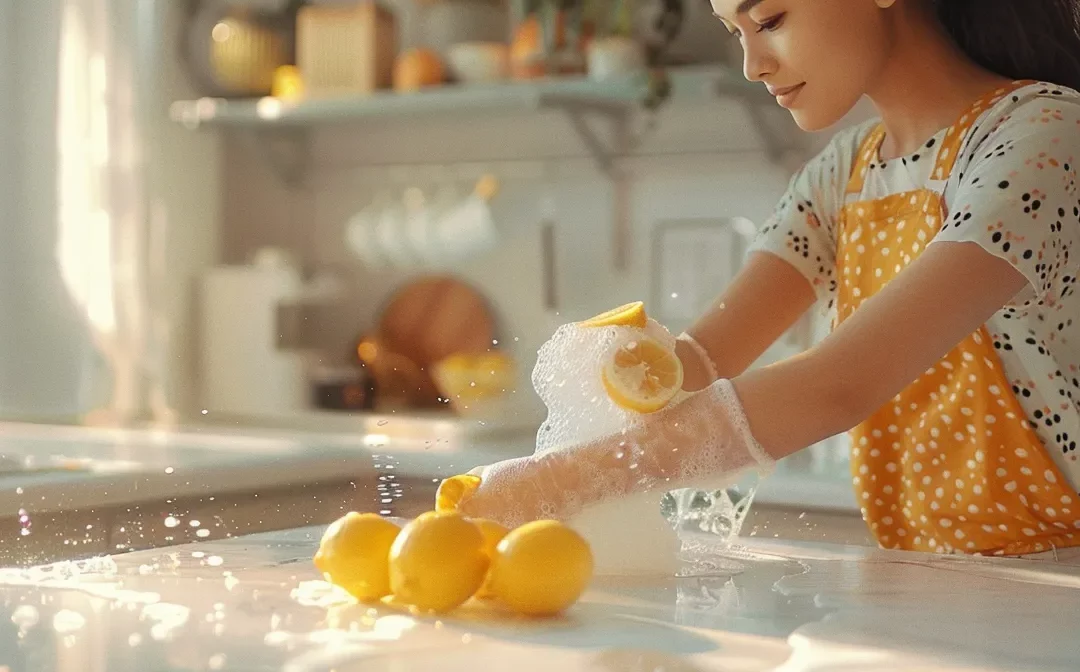Table Of Contents:
- Key Takeaways
- Understanding Your Resurfaced Benchtop Material
- Daily Maintenance Tips for Resurfaced Benchtops
- Deep Cleaning Techniques for Stubborn Stains
- Deep Cleaning Techniques for Stubborn Stains
- Do’s and Don’ts of Resurfaced Benchtop Care
- Handling Spills and Accidents Effectively
- Long-Term Care and Maintenance Strategies
- Conclusion
Are you struggling to keep your resurfaced benchtops looking pristine? You’re not alone. Proper care is essential for maintaining the beauty and durability of your phenolic resin countertops. In this guide, you’ll learn daily maintenance tips, effective deep cleaning techniques, and the do’s and don’ts of resurfaced benchtop care. By following these strategies, you’ll prevent issues like mold build-up and stubborn stains, ensuring your surfaces remain attractive and functional. Let’s dive in and discover how to effectively clean and maintain your resurfaced benchtops today.
Key Takeaways
- understanding your benchtop material helps determine proper cleaning and maintenance methods
- use gentle cleaning solutions to avoid damaging the resurfaced finish
- promptly address spills to prevent stains and maintain appearance
- schedule regular professional inspections for early detection of potential damage
- reapply sealants as needed to protect against stains and wear over time
Understanding Your Resurfaced Benchtop Material

Understanding the material of your resurfaced benchtop is essential for effective cleaning and maintenance. You will explore common types of resurfaced finishes, including plastic, marble, resin, and porcelain. Each material has unique characteristics that influence care methods. Knowing your benchtop’s specifics will ensure you choose the right cleaning techniques and products for optimal results.
Common Types of Resurfaced Benchtop Finishes
When managing a resurfaced benchtop, it’s vital to recognize the variety of finishes available. Plastic finishes are often chosen for their affordability and durability. They can resist staining but may require regular application of wax for shine and protection against minor scratches for FImagine Home Page.
Marble resurfaced finishes provide a classic look and are well-known for their aesthetic appeal. While they can be susceptible to etching from acidic substances, you can maintain their beauty by using gentle cleansers and avoiding harsh solvents. Regular sealing can also prolong their life and enhance their resistance to stains.
Resin and porcelain are popular choices for contemporary kitchens. Resin surfaces are robust and easy to clean with Bathroom and Kitchen Services, but you should avoid using iron pans directly on them to prevent damage. Porcelain offers great durability; however, be careful not to flood the surface during cleaning as it can cause water to seep into seams and potentially weaken the bond.
- Understand the type of resurfaced finish.
- Use wax for plastic finishes to maintain shine.
- Avoid harsh solvents on marble to prevent etching.
- Seal marble surfaces for better stain resistance.
- Keep iron pans away from resin surfaces.
- Be careful about flooding porcelain finishes during cleaning.
Characteristics of Different Resurfacing Materials
When it comes to resurfaced benchtops, understanding the characteristics of the materials can greatly affect how you maintain them. For instance, cast iron surfaces, while durable, can rust if not cared for properly. Using a mixture of rubbing alcohol and mild soap on cast iron will help maintain its finish without risking damage.
Marble benchtops are known for their stunning appearance, but they require special attention. You should avoid using vinegar or acidic cleaners, as these can lead to etching. Regular cleaning with a gentle powder or pH-balanced cleaner will keep the surface looking pristine without causing harm.
Resin and porcelain surfaces are both modern choices that offer excellent durability. While resin is easy to clean, it’s crucial not to expose it to high heat from cast iron cookware, which could lead to degradation. For porcelain, be cautious with acetone; this solvent can weaken the adhesive that holds the tiles together. Always use compatibility-tested cleaners to preserve the integrity of your benchtops.
Importance of Knowing Your Benchtop’s Specifics
Knowing the specifics of your resurfaced benchtop material directly affects its cleanliness and appearance over time. For example, understanding whether your surface is plastic, resin, or marble will guide you in selecting the right cleaning products and techniques. Using an inappropriate cleaner can lead to increased wear and tear, making it essential to match the material to the recommended care methods.
In a bathroom or kitchen setting, the cleanliness of surfaces is paramount. For instance, marble surfaces require gentler cleaning solutions to maintain their finish, while resin can handle more robust cleaning agents. Failing to recognize these differences can result in damage, such as etching or degradation, which diminishes the beauty and functionality of your benchtop.
Moreover, being aware of your benchtop’s specifics allows you to implement focused maintenance practices. This includes knowing how frequently to apply a protective spray or sealant, which varies by material. By taking these steps, you prolong the life of your surfaces and uphold their aesthetic appeal, ensuring your spaces remain inviting and well-maintained.
Caring for your resurfaced benchtop keeps it looking fresh and new. Follow these daily maintenance tips to ensure it lasts for years to come.
Daily Maintenance Tips for Resurfaced Benchtops
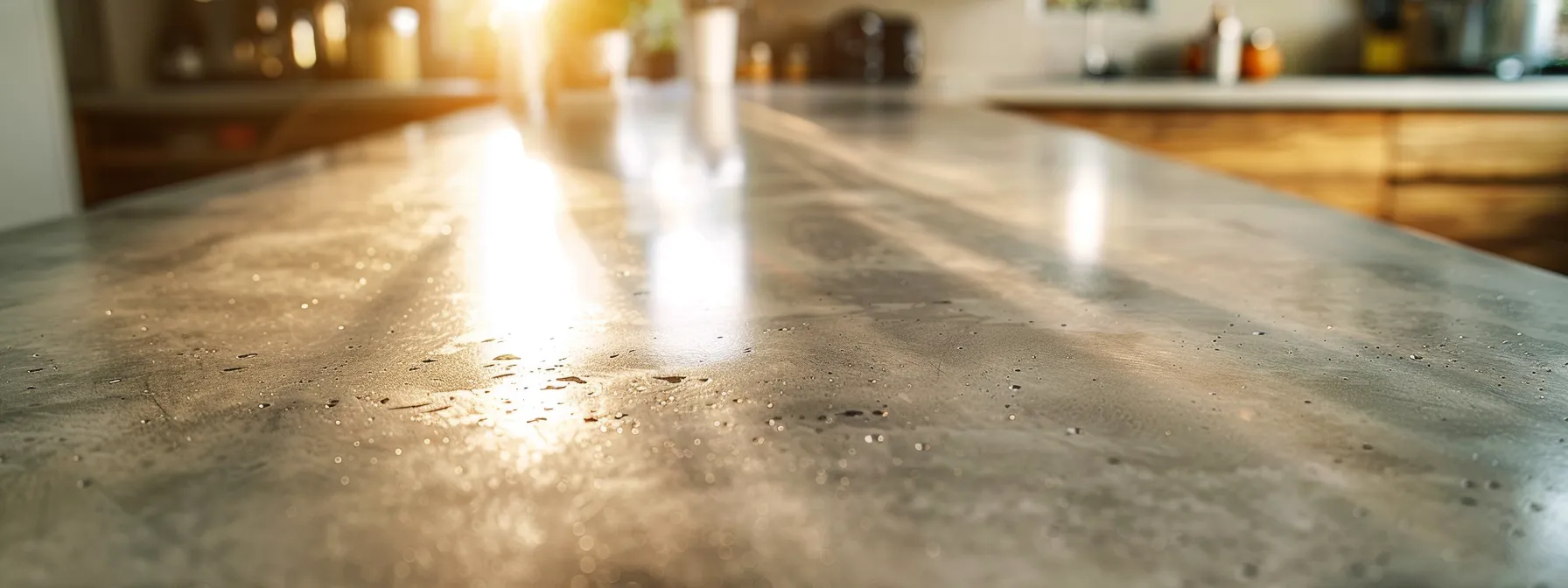
Adopting gentle cleaning practices is essential for maintaining the finish of your resurfaced benchtop, whether it mimics concrete or comes from a resurfaced bathtub. This section will highlight safe cleaning agents for everyday use that won’t damage the surface. Additionally, you’ll learn how to prevent surface damage during daily use, ensuring your benchtop remains durable and visually appealing.
Gentle Cleaning Practices to Adopt
To keep your resurfaced benchtops in top shape, implementing gentle cleaning practices is essential. Start by regularly utilizing a microfiber cloth to wipe away dust and debris. This helps avoid scratching the surface while ensuring you maintain a clean area that does not harbor germs.
When it’s time to disinfect your benchtops, opt for a disinfectant that is safe for your specific resurfaced material. You can create a simple cleaning solution by mixing warm water with a mild dish soap in a spray bottle. This mixture effectively removes dirt and grime without causing damage, giving you peace of mind as you care for your surfaces.
If you want to elevate your cleaning routine, consider using ultrasonic cleaning for stubborn stains. This method uses high-frequency waves to gently lift particles without scratching the surface, making it ideal for maintaining a pristine appearance. Always ensure your cleaning area is well-ventilated to enhance the effectiveness of your cleaning products and to promote a safe environment while you work.
Safe Cleaning Agents for Everyday Use
When maintaining resurfaced benchtops, you should choose safe cleaning agents that effectively clean without causing damage. Using a mild dish soap mixed with warm water creates a gentle solution that’s safe for surfaces around the sink or shower, ensuring you avoid harsh chemicals that can weaken the finish. This simple mixture removes grime while preserving the integrity of your benchtop material.
Foam cleaners specifically designed for kitchen and bathroom surfaces can be highly effective. Look for products that are safe for your material, whether it’s plastic, resin, or porcelain. Foams tend to cling to surfaces, allowing them to work on stubborn stains without excessive scrubbing, which can help reduce wear from moisture over time.
For quick touch-ups in your bathroom or kitchen, consider using a stainless steel cleaner for appliances and fixtures. These products can also help maintain the overall aesthetic of your resurfaced benchtops, ensuring they remain visually appealing. Just make sure to check compatibility to avoid any adverse reactions that could lead to damage or a dull surface.
Preventing Surface Damage During Daily Use
To prevent surface damage during daily use on your resurfaced benchtops, it is important that you are mindful of the tools you utilize. Using a soft-bristled brush and mild soap for cleaning can help maintain the integrity of the surface. Avoid abrasive materials, as they can wear down the finish and create scratches that diminish the aesthetic appeal of your benchtop.
Additionally, always wear personal protective equipment, such as gloves or an apron, when cleaning to protect yourself from any harsh cleaning agents that might be unsafe for your skin. This also helps ensure you manage the cleaning process effectively without introducing unwanted contaminants to your benchtops. A simple coat of care will keep your surfaces looking fresh and can extend their lifespan.
Lastly, be cautious with heavy items on your benchtops. Whenever possible, lift objects instead of dragging them across the surface. This can significantly reduce the risk of scratches or scuffs that may occur over time. By paying attention to these practices, you can maintain a well-preserved and visually appealing benchtop in your kitchen or bathroom.
Even with daily care, stains can linger stubbornly on your resurfaced benchtops. To tackle these challenges, let’s explore effective deep cleaning techniques that will restore their shine.
Deep Cleaning Techniques for Stubborn Stains
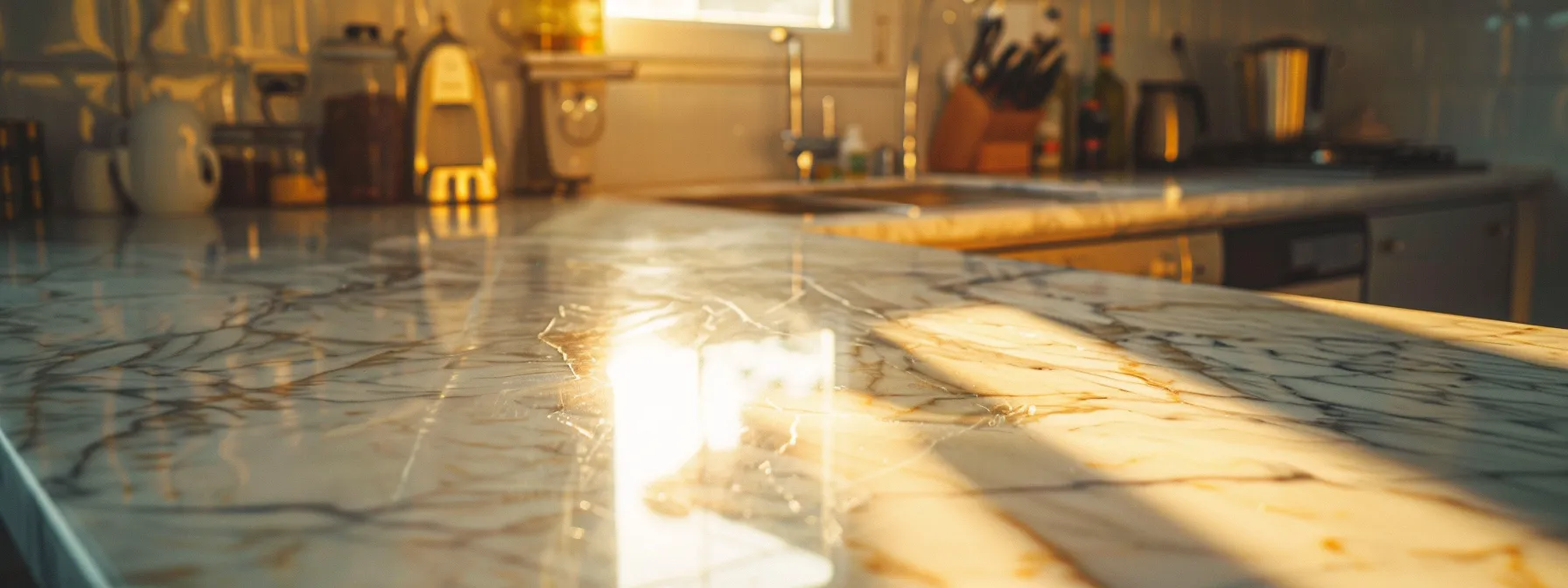
Deep Cleaning Techniques for Stubborn Stains
Identifying stains on your resurfaced benchtops is the first step towards effective cleaning. This section will guide you through appropriate treatments for different stain types, followed by a step-by-step guide for deep cleaning your surfaces. You’ll also discover homemade cleaning solutions that incorporate mineral oil and other useful ingredients to tackle tough stains without damaging your surfaces. These practical insights ensure your resurfaced areas remain attractive and functional.
Identifying Stains and Appropriate Treatments
Identifying the type of stain on your resurfaced benchtops is crucial for appropriate treatment. For example, stains caused by acid, like those from citrus beverages, require a different approach than those originating from grout or other solid substances. Recognizing these differences allows you to choose the most effective cleaning agents, such as lemon juice for neutralizing minor acid stains while being careful not to leave it on for too long.
When dealing with stubborn epoxy stains, it’s important to assess the extent of the damage. You can often treat these with specific solvents designed for epoxy removal. However, you should always test a small, inconspicuous area first to ensure that your chosen treatment doesn’t harm the finish of your resurfaced benchtop.
If you encounter anything more complex, like stains that seem to linger despite regular cleaning, consider consulting a professional cleaning service or a laboratory specializing in surface restoration. They can provide tailored solutions that may include deep cleaning techniques or specialized products designed for your benchtop material, ensuring you maintain its integrity and appearance.
Step-by-Step Guide to Deep Cleaning
To begin deep cleaning your resurfaced benchtops, make sure you gather the right materials. You’ll want to have isopropyl alcohol on hand, as it effectively removes stubborn stains without damaging the surface. Start by dampening a cloth with the isopropyl alcohol and gently blotting the stain, allowing it to penetrate for a few minutes.
Next, if the stain persists, consider utilizing a cleaning solution that contains oil to break down tougher residues. Applying a small amount of this solution to the affected area and letting it sit for a while will help lift the stain more effectively. Afterward, use a soft cloth to wipe the area clean, ensuring you remove any remaining oil that could attract dirt and grime.
For areas with caulk or built-up grime, you may need a more intensive approach. Use a specialized cleaner or a gentle solution of soap and water to carefully scrub the surface. If you notice any scratches or imperfections after cleaning, touch them up with polyurethane or consider reglazing to restore the finish. This way, you can keep your resurfaced benchtops looking immaculate and fully functional.
Homemade Cleaning Solutions That Work
One reliable homemade cleaning solution for your resurfaced benchtops is a mixture of baking soda and water. This gentle paste acts as a non-abrasive scrub, effectively removing grease and stains without scratching the surface. You can apply it directly to stubborn spots and let it sit for a few minutes before wiping with a damp cloth to maintain the integrity of your benchtop while ensuring you protect its warranty.
Another effective approach is using a blend of vinegar and liquid dish soap. This combination excels at cutting through grime and leaves your surfaces looking fresh. However, always remember to thoroughly rinse the area after cleaning, as vinegar can potentially lead to corrosion over time, especially on surfaces that are not well-sealed.
For those tough, set-in stains, consider using a solution of hydrogen peroxide and baking soda. This mixture not only helps to brighten stained areas but also doesn’t introduce abrasive chemicals that could damage your resurfaced benchtops. As you use these homemade cleaning solutions, ensure that you follow up with a protective sealant to prolong the lifespan of your benchtops and maintain their aesthetic appeal.
Cleaning is just the start. To keep your resurfaced benchtop looking its best, know the do’s and don’ts that make all the difference.
Do’s and Don’ts of Resurfaced Benchtop Care
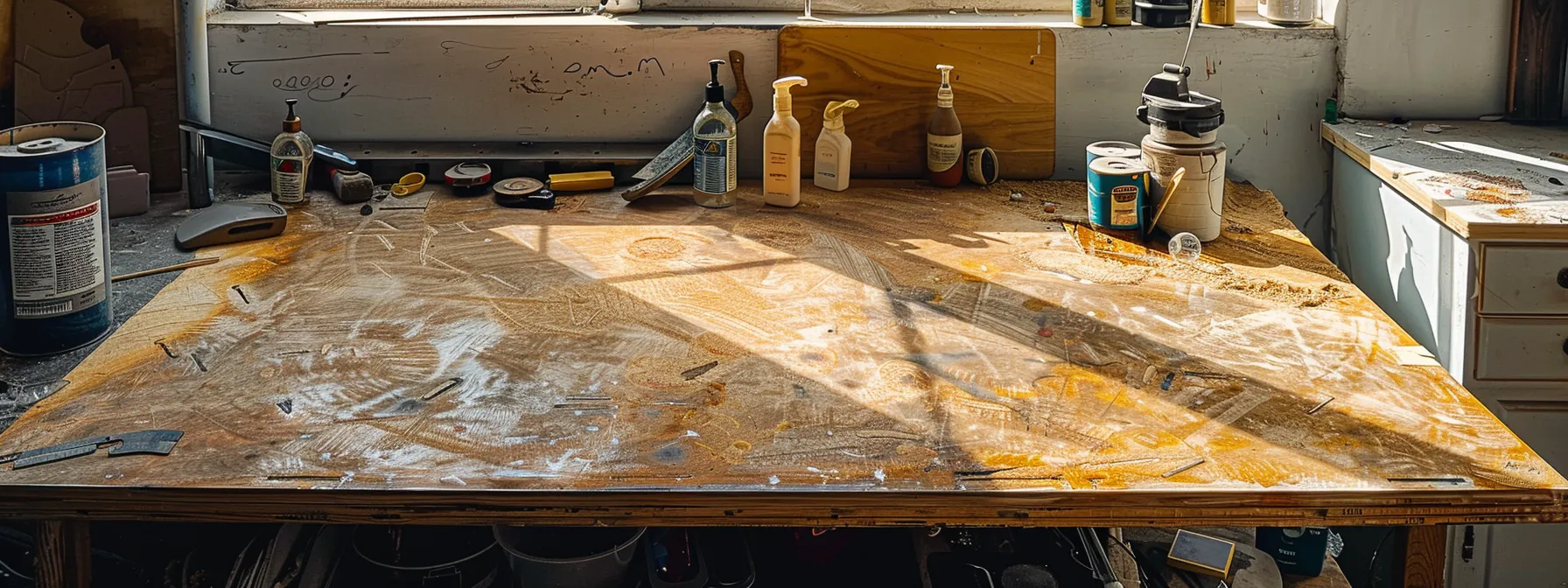
To maintain the integrity of your resurfaced benchtops, it’s essential to recognize actions to avoid to prevent damage. This section will cover best practices for prolonging surface life, addressing common mistakes related to bacteria and contamination. By understanding these guidelines, you can effectively prevent aerosol issues and ensure your benchtops remain safe and visually appealing.
Actions to Avoid to Prevent Damage
Avoid using abrasive cleaners and scouring pads on your resurfaced benchtops, as they can cause scratches and damage the finish. Instead, opt for gentle cleaning solutions that protect the material. Keep in mind that maintaining the waterproofing of your surfaces is crucial for preventing stains and damage over time.
Another action to steer clear of is exposing your benchtops to extreme heat or heavy items without protection. Using trivets or cutting boards can help prevent marks and maintain the integrity of your resurfaced surfaces. Preventing flux from heat will also ensure your benchtops remain visually appealing and fully functional.
Finally, never ignore spills, as letting liquids sit can lead to stains and irreversible damage. Wipe up any spills immediately using a soft cloth to preserve the condition of your benchtops. Implementing these preventive measures will enhance the longevity of your resurfaced areas and keep them looking pristine:
- Use gentle cleaning products.
- Avoid abrasive tools and harsh chemicals.
- Prevent heat exposure by using insulating materials.
- Wipe up spills promptly to avoid stains.
Best Practices for Prolonging Surface Life
To prolong the life of your resurfaced benchtops, always use cutting boards and trivets. This simple practice helps protect the surface from scratches, heat, and stains caused by hot cookware or sharp utensils. By making this small adjustment, you maintain the appearance and integrity of your surfaces, ensuring they remain functional and stylish for years to come.
Regular maintenance is key to preserving the beauty of your resurfaced benchtops. Cleaning spills immediately prevents staining and damage, while utilizing gentle cleaning products can avoid wear on the surface. Incorporate a routine that includes gentle dusting and cleaning to keep your benchtops looking their best while minimizing the risk of long-term issues.
Consider applying a protective sealant periodically to enhance your benchtop’s durability. This layer not only helps resist stains and scratches but also retains the original finish. Different materials require specific sealants, so be sure to research or consult professionals to select the right option for your resurfaced surface:
- Use cutting boards and trivets to protect surfaces.
- Clean spills immediately to prevent staining.
- Apply a protective sealant regularly for added durability.
Common Mistakes and How to Prevent Them
One common mistake you may encounter is using harsh cleaners or abrasive pads on your resurfaced benchtops. These products can scratch and damage the finish, leading to long-term deterioration. Instead, stick to gentle cleaning solutions and soft cloths that will protect the surface while keeping it clean.
Another frequent error is neglecting immediate clean-up of spills. Allowing liquids to sit on your benchtops can result in stubborn stains and potential damage. Make it a habit to wipe up spills promptly, which will help maintain the integrity and appearance of your surfaces over time.
Finally, you should be cautious about using high-heat cookware directly on your resurfaced benchtops. This can lead to heat damage that compromises both aesthetics and functionality. Always use trivets or cutting boards to safeguard your surfaces from heat exposure:
- Use gentle cleaning solutions to avoid surface damage.
- Wipe up spills immediately to prevent staining.
- Utilize trivets and cutting boards to protect from heat.
Even with careful attention, spills can happen. Knowing how to handle them swiftly makes all the difference in keeping your benchtop looking its best.
Handling Spills and Accidents Effectively
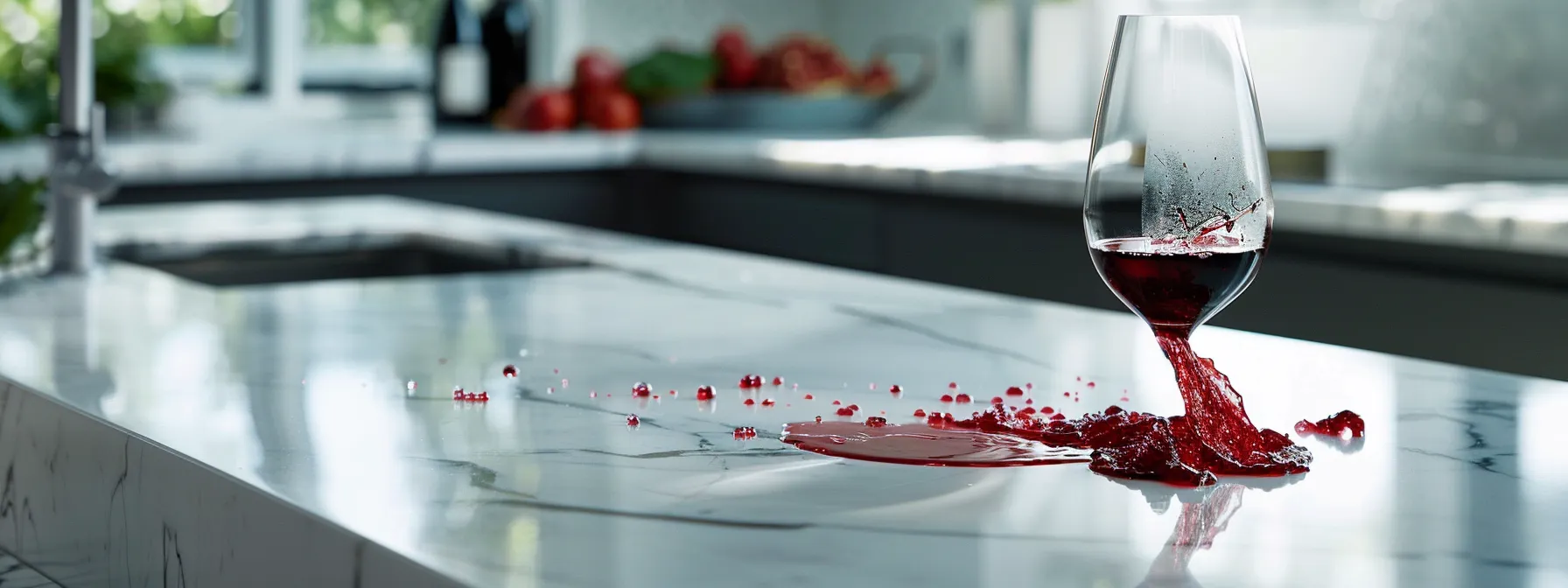
When spills occur on your resurfaced benchtops, knowing the immediate steps to take is crucial for preventing damage. In this section, you’ll learn how to handle various types of spills effectively, from food and liquids to abrasive substances. You will also discover strategies for protecting the surface from long-term effects, ensuring that your benchtops maintain their integrity and appearance.
Immediate Steps to Take After a Spill
When a spill occurs on your resurfaced benchtop, the first step is to act quickly. Immediately grab a soft cloth or paper towel to blot up the liquid, rather than wiping, to minimize spreading the stain. This approach helps prevent liquids from seeping into seams or any porous materials, preserving the integrity of your benchtop.
Next, once you’ve absorbed as much of the spill as possible, gently clean the affected area with a mild cleaning solution. A mix of warm water and a few drops of dish soap works effectively for most surfaces. Always use a cloth that is non-abrasive to avoid scratching the finish, ensuring your benchtop remains in optimal condition.
Finally, after cleaning, it’s wise to inspect the area for any remaining stains. If necessary, apply a suitable stain remover specifically designed for your resurfaced material, taking care to follow the manufacturer’s instructions. By staying proactive in addressing spills, you can maintain both the beauty and functionality of your benchtops over time.
Cleaning Up Different Types of Spills
When dealing with spills on your resurfaced benchtops, the first step is to assess the type of liquid involved. For water or juice spills, act promptly by blotting the area with a soft cloth. This will help prevent any liquid from seeping into the seams, which is crucial for maintaining the integrity of your benchtop.
If you encounter oil-based substances like cooking oil or grease, you will need to follow a specific approach. Blot the excess oil with a dry cloth, then use a solution of warm water and mild dish soap to gently clean the area. This will effectively lift the grease while being safe for the resurfaced material.
In the case of sticky spills, like those from syrups or sauces, it’s essential to remove the residue without damaging the surface. Start by scraping off any solid particles with a plastic spatula, then apply a gentle cleaning solution that suits your benchtop’s material. This method ensures you tackle the stickiness effectively while preserving the finish of your resurfaced benchtop.
Protecting the Surface From Long-Term Damage
To protect the surface of your resurfaced benchtops from long-term damage, regularly inspect your cleaning materials and techniques. Choosing the right products tailored for your benchtop material is crucial. For instance, using pH-balanced cleaners can prevent unintended wear and maintain the finish, ensuring your surfaces remain looking new for years.
Additionally, develop a habit of immediately addressing spills with appropriate actions. Promptly blotting spills and cleaning with safe solutions can prevent staining and damage over time. This proactive approach not only preserves the integrity of your resurfaced benchtops but also reduces the likelihood of costly repairs in the future.
Finally, applying a protective sealant at recommended intervals can significantly enhance the durability of your resurfaced surfaces. This preventive measure helps shield against damage from moisture, stains, and scratches. By periodically reapplying the sealant, you ensure your benchtops maintain their aesthetic appeal and functional qualities, making your cleaning efforts more effective and worthwhile.
Despite your best efforts, surfaces may still need a little extra attention. Discovering long-term care and maintenance strategies will ensure your kitchen and bathroom retain their shine for years to come.
Long-Term Care and Maintenance Strategies
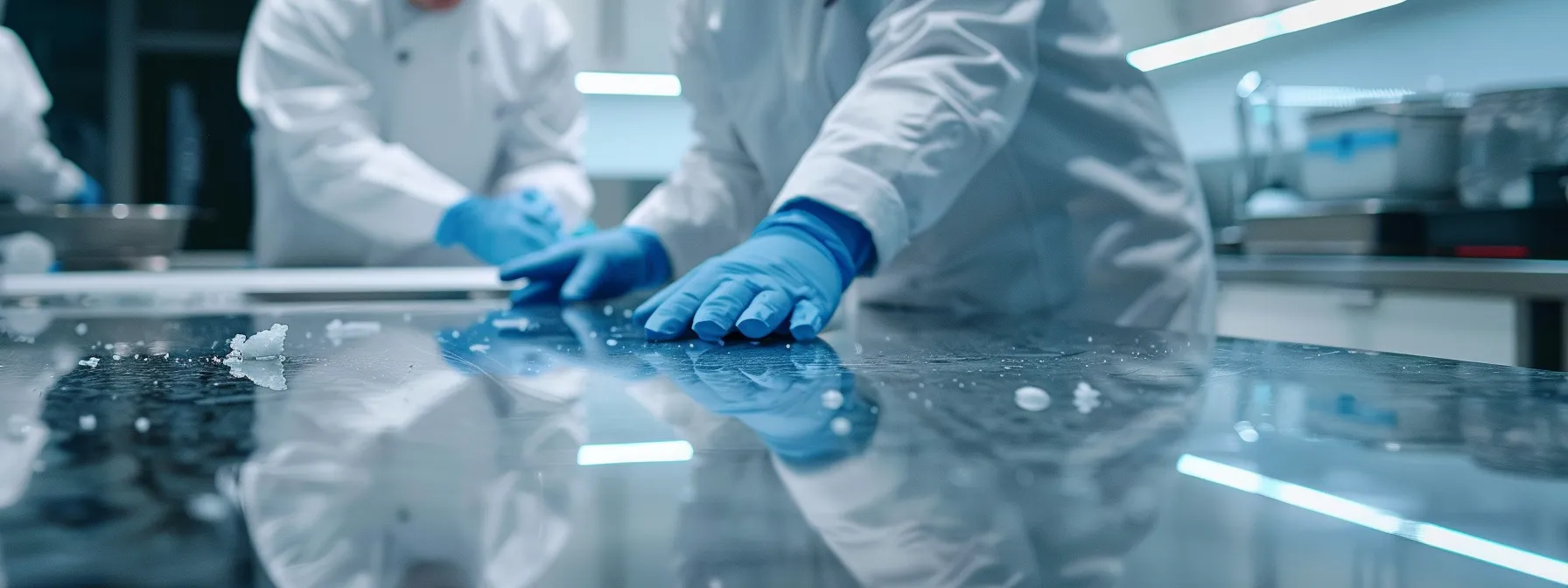
To ensure your resurfaced benchtops remain in excellent condition, consider scheduling regular professional inspections to catch potential issues early. You’ll also learn when to reapply sealants for optimal protection. Along with these strategies, you’ll find effective tips to keep your benchtop looking new and vibrant for years, enhancing both its aesthetic appeal and functionality.
Scheduling Regular Professional Inspections
Scheduling regular professional inspections for your resurfaced benchtops is vital for maintaining their integrity and appearance over time. These inspections allow experts to assess the condition of your surfaces, identifying any potential issues before they escalate into costly repairs. By prioritizing these appointments, you take proactive steps to ensure your surfaces remain in excellent condition, setting the foundation for long-term durability.
During these inspections, professionals can provide insights tailored to your specific resurfaced materials, helping you understand when to apply protective coatings or sealants. They can also recommend cleaning products that will preserve the beauty and functionality of your benchtops. By leveraging their expertise, you can make informed decisions that enhance the lifespan of your resurfaced surfaces and keep them looking new.
Implementing a routine for professional inspections not only safeguards your investment but also gives you peace of mind. Scheduling these evaluations at regular intervals—every six to twelve months—can keep your resurfaced benchtops in top shape. Here are some benefits of regular professional inspections:
- Early detection of potential damage.
- Customized recommendations for cleaning and maintenance.
- Enhanced longevity of your resurfaced surfaces.
When to Consider Reapplying Sealants
Reapplying sealants on your resurfaced benchtops is crucial for maintaining their protective layer against stains and damage. You should consider reapplying sealants when you notice a change in the surface’s appearance or feel; for instance, if liquids seem to be absorbing more quickly or you see discoloration. This indicates that the previous sealant may be wearing thin, compromising its effectiveness.
Another key factor to determine when to reapply sealants is the frequency of use in your kitchen or bathroom. If your resurfaced benchtops receive heavy daily use, such as from cooking or constant cleaning, you may need to refresh the sealant every six months to a year. Regular inspections can help you stay on top of maintenance and ensure your surfaces remain in optimal condition.
In addition, consider seasonal changes that may affect your benchtops, such as increased humidity or temperature fluctuations. These conditions can impact the performance of the existing sealants over time. By remaining vigilant about these factors, you can effectively maintain your resurfaced benchtops and protect your investment:
- Look for signs of wear and discoloration.
- Assess usage frequency for timely reapplication.
- Monitor seasonal changes that may affect sealant integrity.
Tips for Keeping Your Benchtop Looking New
To keep your resurfaced benchtops looking new, incorporate a routine cleaning schedule. Regularly dusting the surfaces with a soft microfiber cloth prevents the accumulation of dirt and debris, which can lead to scratches over time. Maintain this habit to promote a fresh appearance and avoid long-term damage to your beautiful benchtops.
Choosing the right cleaning products is essential for sustaining the look of your resurfaced benchtops. Stick with gentle cleaners that are specifically formulated for the material of your benchtop, avoiding harsh chemicals that can wear down the finish. Using these appropriate products will help preserve the vibrant appearance and integrity of your surfaces for years to come.
You should also proactively address any spills or stains as soon as they occur, which will significantly reduce the risk of permanent damage. For instance, blot any liquid immediately rather than wiping, and use a mild soap solution for cleaning. This prompt action helps maintain the pristine look of your resurfaced benchtops and keeps your kitchen or bathroom inviting.
Conclusion
Maintaining the integrity and appearance of your resurfaced benchtops is vital for long-term durability and aesthetics. By understanding the specific materials and employing effective cleaning techniques, you can prevent damage and preserve their functionality. Regular inspections, safe cleaning agents, and prompt spill management are key strategies to uphold your surfaces’ pristine condition. Prioritize these actionable insights to ensure your benchtops remain visually appealing and functionally sound for years to come.
